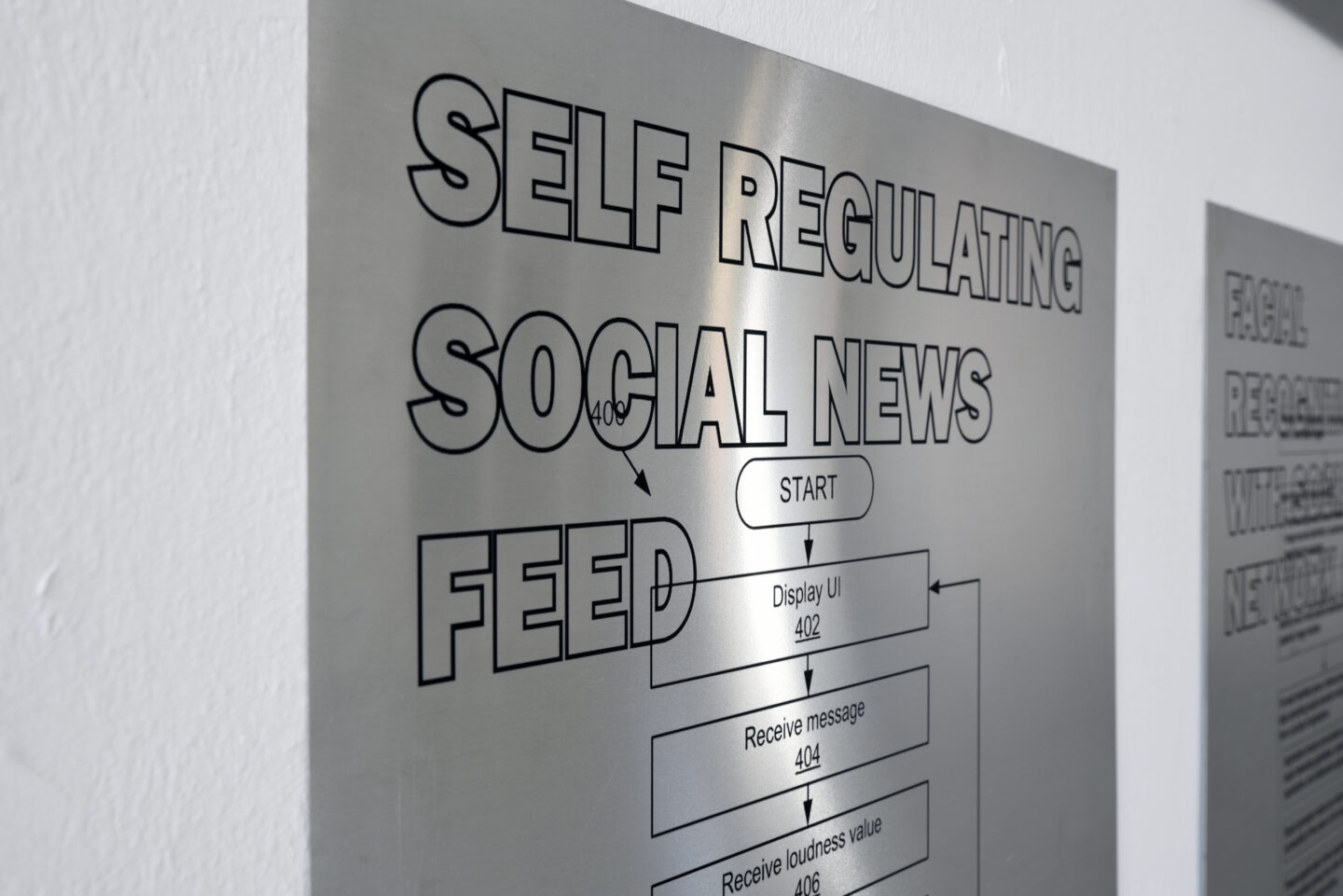This artwork documents over twenty-thousand patents of socially manipulative technology. In Sociality, Cirio collected and rated thousands of inventions submitted to the U.S. patent office concerning the development of Internet technology over the past twenty years. Subsequently, he invited the public to share, flag, and ban the technologies designed to monitor and manipulate social behaviors. The patent images and data were obtained by Cirio through hacking the Google Patents search engine. Then he rated the patents and created thousands of compositions with images of flowcharts and titles of inventions, which were published on the project’s website, https://Sociality.today. The visual compositions on the website were printed in form of posters and a coloring book for informing on devices that enable discrimination, polarization, addiction, deception, and surveillance.
The concept of turning patents into vehicles for regulation aims to exploit intellectual property law as a tool for democratic oversight. This work integrates both the dystopia surrounding technology and the utopia of its participatory governance with flowcharts of patents taking the form of documentary and protest art. With this problematizing piece, Cirio exposed evidence of social manipulation and questioned the ethical, legal, and economic structures of such technological apparatuses. In the exhibition, the public confronts large-scale compositions with hundreds of images of flowcharts that abstractly invoke the complexity and magnitude of such uncanny plans to program people.
Paolo Cirio works with legal, economic, and cultural systems of the information society. He shows his research and intervention-based works through artifacts, photos, installations, videos, and public art. Cirio’s work embodies the contradictions, ethics, limits, and potentials inherent to the social complexity of information society through a provocative, critical, and proactive approach.
Cirio has exhibited in museums and art institutions worldwide. He shows his research and intervention-based works through prints, installations, videos, and public art. He investigates social fields impacted by the Internet, such as privacy, democracy, semiology, finance, and copyright. Cirio’s art considers how society is affected by the control over information. It embodies the contradictions, ethics, limits, and potentials inherent to the social complexity of information society through a critical and proactive approach. As a result of his performances, Cirio has often been subject to investigations, legal and personal threats by governmental and military authorities, powerful multinationals, global banks and law firms, as well as online crowds of ordinary people.
Paolo Cirio is known for having exposed over 200,000 Cayman Islands offshore firms with the work Loophole for All in 2013; the hacking of Facebook through publishing 1 million users on a dating website with Face to Facebook in 2011; the theft of 60,000 financial news articles with Daily Paywall in 2014 and of e-books from Amazon.com with Amazon Noir in 2006; defrauding Google with GWEI in 2005; and the obfuscation of 15 million U.S. criminal records with Obscurity in 2016; exposing over 20,000 patents of technology-enabling social manipulation in 2018 with Sociality. Recently, in 2020, he pirated over 100,000 Sotheby’s auction records in Derivatives and he attempted to profile 4000 French police officers with facial recognition in Capture. His early works include his cyber attacks against NATO and reporting on its military operations since 2001.
